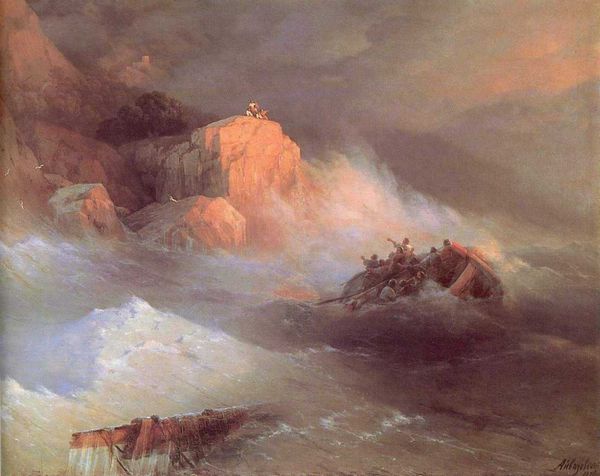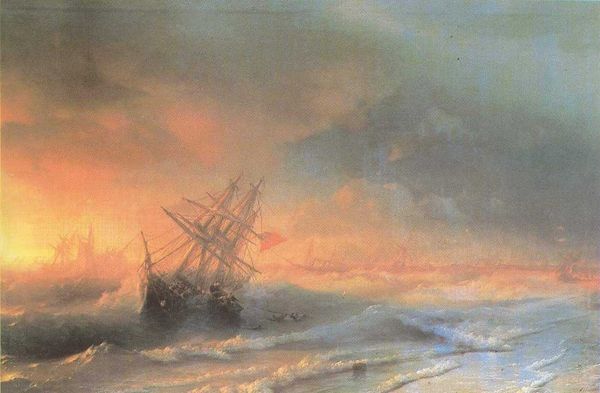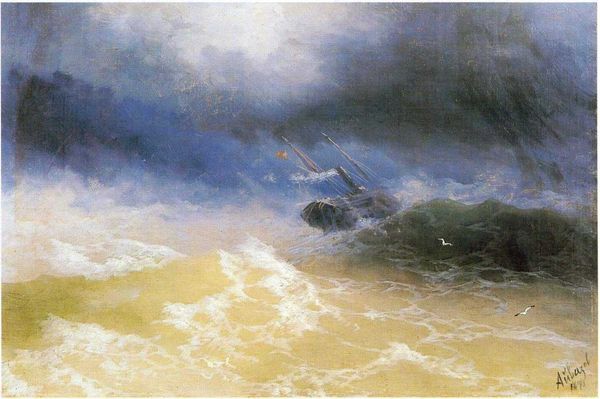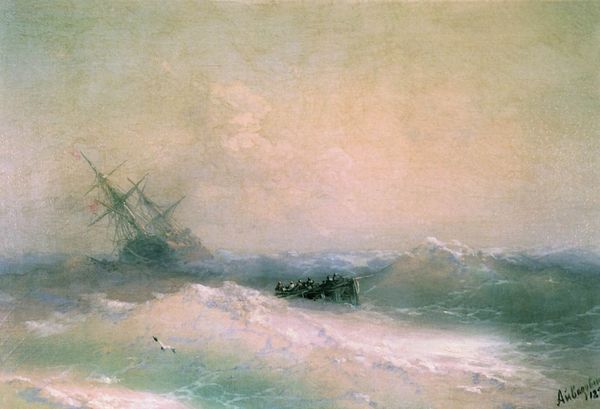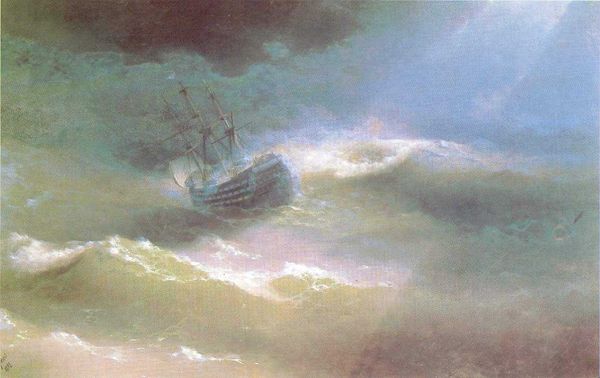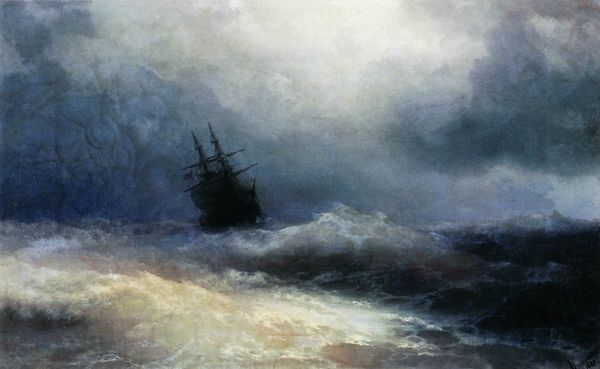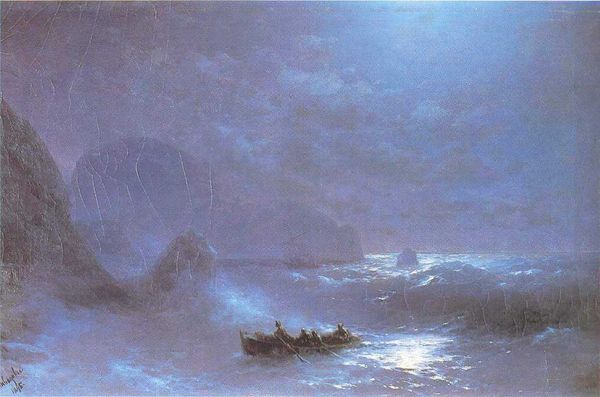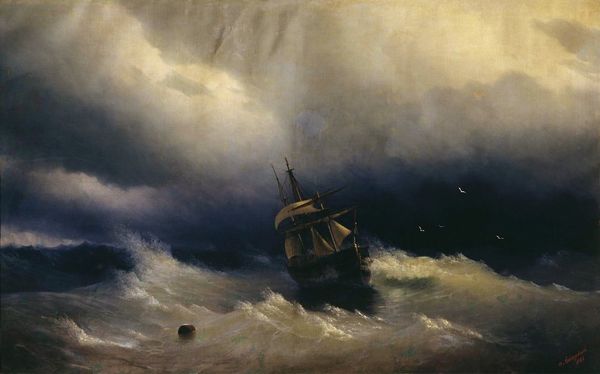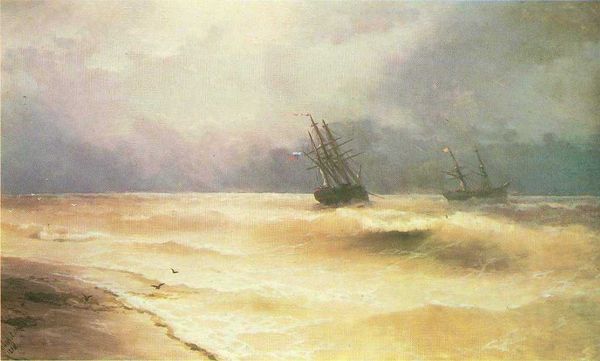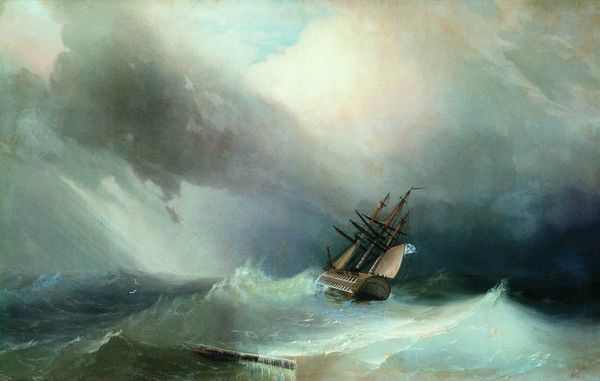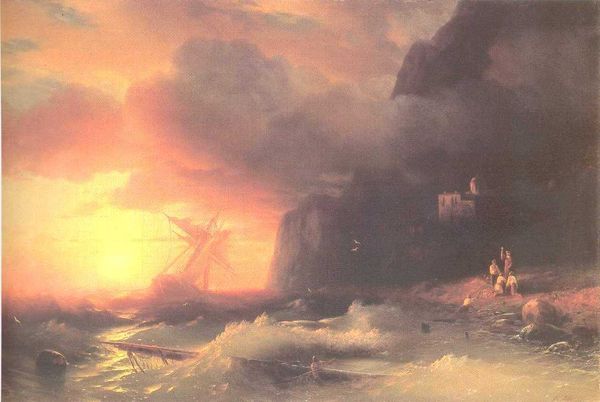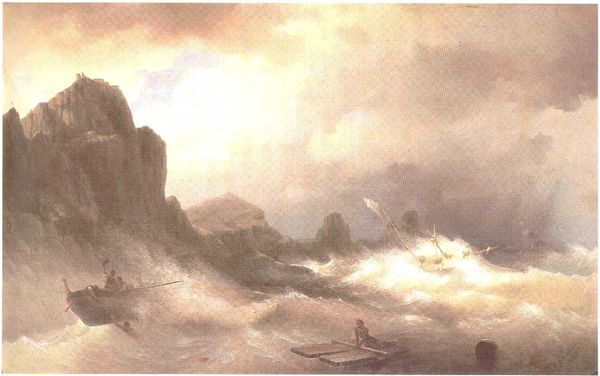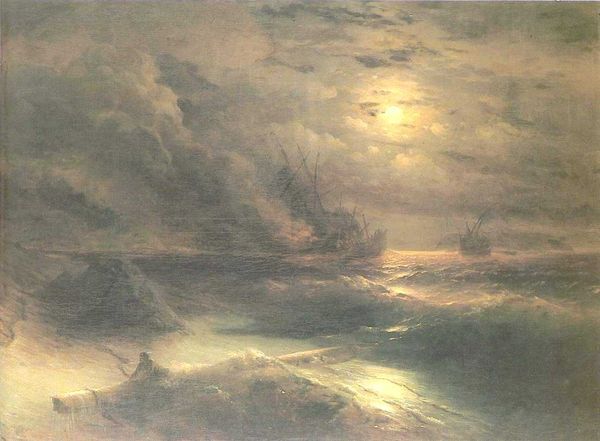
Dimensions: 215 x 325 cm
Copyright: Public domain
Editor: Ivan Aivazovsky's "The Tempest by cape Aiya," painted in 1875 with oil on canvas, is a breathtaking depiction of a ferocious storm at sea. The way the light catches the crashing waves and ominous clouds really captures the overwhelming power of nature. What stands out to you most when you look at this piece? Curator: For me, this work speaks volumes about humanity's eternal dance with the sublime, doesn’t it? Look how Aivazovsky positions the tiny boat amidst such turmoil. It's a visual shorthand for human vulnerability in the face of overwhelming forces, almost Biblical in its implications of trials and survival. But what about the cultural context? The date of the piece and the romantic aesthetic makes me wonder how it reflects the prevailing worldview of that time. Do you get a sense of national identity conveyed? Editor: I hadn't thought of it that way. Given that Aivazovsky was Russian, perhaps the tumultuous sea serves as a metaphor for the challenges faced by the Russian Empire, a symbol of its strength in weathering geopolitical storms. It might even be an invitation to think about more personal struggles. Curator: Precisely! The imagery of the storm resonates universally, doesn't it? The individual’s struggle, hope amidst despair. Aivazovsky seems to be using these visual emblems to explore enduring human conditions. The ship, caught, ravaged is a symbol for perseverance. It's about faith, almost like an icon where every element has significance. Editor: I see what you mean about it resonating universally; the symbolism makes the painting speak beyond a single story, don't you think? I didn't expect to discover so many interpretations. Curator: And there we find its true power; it reminds us of the collective and continuous struggles, hope, and resilience across generations through very poignant imagery.
Comments
No comments
Be the first to comment and join the conversation on the ultimate creative platform.
